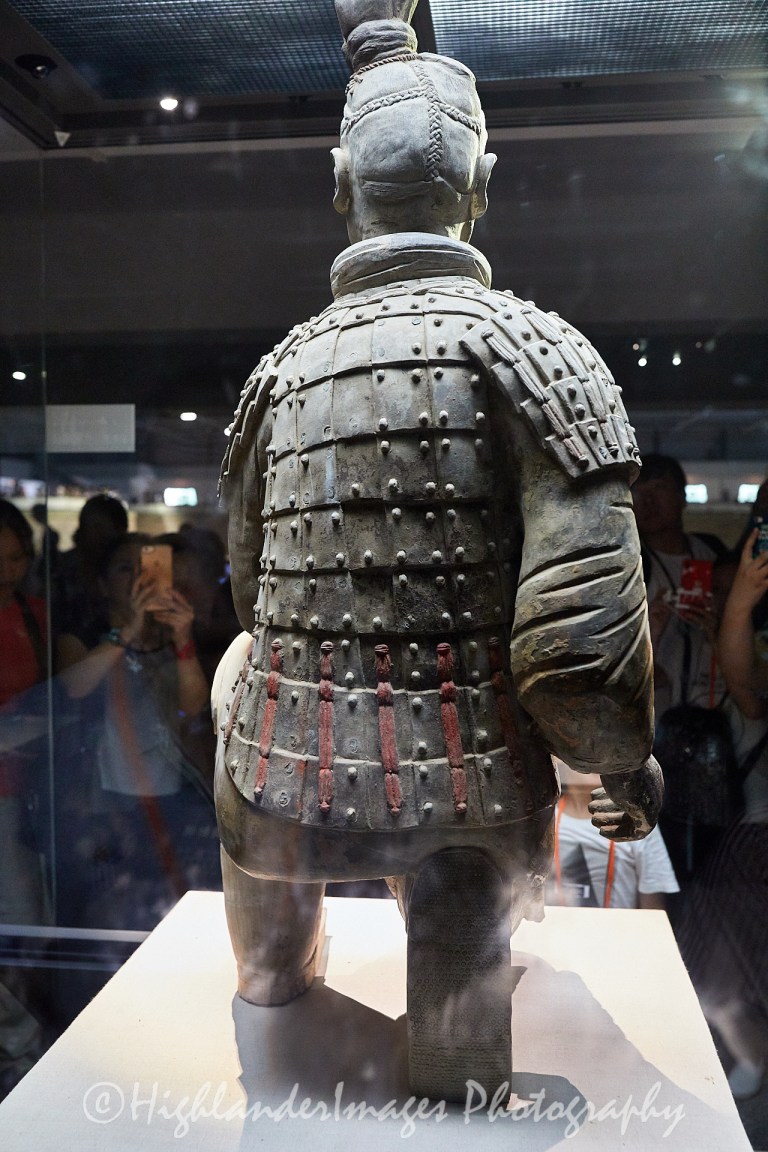![[Group 0]-IMG_0017_IMG_0023-7 images](https://i0.wp.com/highlanderimagesphotography.com/wp-content/uploads/2018/07/group-0-img_0017_img_0023-7-images.jpg?resize=768%2C350&ssl=1)
This was my second visit to the Terracotta Warriors Museum in Xi’an, China; the first visit was some 10 years ago. Since that time they have excavated some more, uncovered even more statues and artifacts and expanded the viewing areas.






The Terracotta Army was discovered on 29 March 1974 by farmers digging a water well approximately 1.5 kilometres (0.93 mi) east of the Qin Emperor’s tomb mound at Mount Li (Lishan), a region riddled with underground springs and watercourses. For centuries, occasional reports mentioned pieces of terracotta figures and fragments of the Qin necropolis – roofing tiles, bricks and chunks of masonry. This discovery prompted Chinese archaeologists including Zhao Kangmin to investigate, revealing the largest pottery figurine group ever found in China. A museum complex has since been constructed over the area, with the largest pit enclosed within with a large structure.
Four main pits approximately 7 metres (23 ft) deep have been excavated. The soldiers within were laid out as if to protect the tomb from the east, where the Qin Emperor’s conquered states lay.






Terracotta Warriors Pit 1 is the largest pit of the underground Terracotta Army. Inside it, there are over 6,000 terracotta warriors and horses including infantry, cavalry and chariot warriors. They are life-like and life-sized, and arranged in a battle formation. There are five sloping entrances on both the eastern and western sides. Two side doors are installed on the northern and southern sides. About every three meters (3.3 yards), there is a puddle wall, which separates the underground army into different columns. The walls were fortified with wooden columns, earth and reeds while the floor was covered with caesious bricks. Some bricks are orange, decorated and engraved with string patterns and a few characters respectively.




All the pottery warriors and horses were made using local clay, then baked in the kiln. After firing the figures were completed with painted detail. The Qin Terra-cotta Warriors and Horses were big in life-size and exquisitely made with ancient high technology.







The statue of Kneeling Archer at the Terra-cotta Warriors Museum in Xi’an, China was made of terra-cotta. It was an imitation of the crossbow soldier belonged to the guardian army of Qin Shihuang.
This statue was excavated in 1994 from No.2 Pit, which, along with the other three pits that included the statues of the standing archers, infantry, cavalry, and chariot, constitutes the underground phalanxes that guarded the Qin Shihuang’s tomb located in Lingtong, Shan’xi Province, China.


Pit 2 has cavalry and infantry units as well as war chariots and is thought to represent a military guard. Pit 3 is the command post, with high-ranking officers and a war chariot. Pit 4 is empty, perhaps left unfinished by its builders.
Some of the figures in Pits 1 and 2 show fire damage, while remains of burnt ceiling rafters have also been found. These, together with the missing weapons, have been taken as evidence of the reported looting by Xiang Yu and the subsequent burning of the site, which is thought to have caused the roof to collapse and crush the army figures below. The terracotta figures currently on display have been restored from the fragments.
Other pits that formed the necropolis also have been excavated. These pits lie within and outside the walls surrounding the tomb mound. They variously contain bronze carriages, terracotta figures of entertainers such as acrobats and strongmen, officials, stone armour suits, burials sites of horses, rare animals and labourers, as well as bronze cranes and ducks set in an underground park.




Passionate Photographer …. Lost in Asia
Stuart Taylor of HighlanderImages Photography has been making images for over 30 years and can offer a diverse range of photo imaging services with a focus on Asia and a documentary/photojournalistic style. These services include planning and executing a photo shoot on location but importantly all the post-processing and image preparation needed for the specific finished media format required by the customer. Stuart’s experience and knowledge in all of these aspects makes HighlanderImages Photography a one-stop-shop for a comprehensive and professional image production service.
Stuart can be available for a variety individual assignments or projects and he specialises in areas such as photojournalism, commercial, architectural, real estate, industrial, interior design, corporate, urbex, adventure, wilderness and travel photography.
Final image products can be delivered as high resolution images, prints, books, multimedia slideshows, videos and DVDs. Images from this website can be purchased as prints in a variety of sizes and media, as gift items or as digital downloads.
E-Mail : staylor@highlanderimages.com
Website : http://www.highlanderimages.com


One thought on “Terracotta Warriors Museum, Xi’an, China”